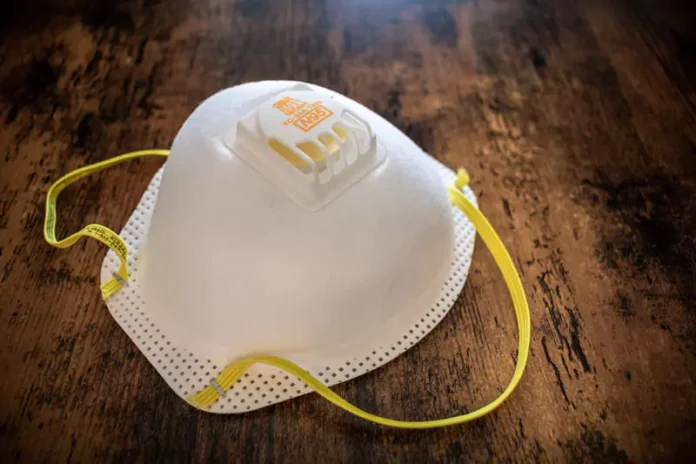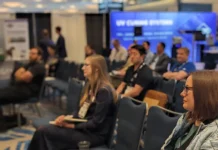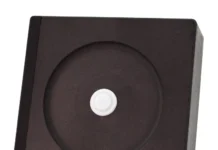As published in Safety and Health Magazine.
The use of ultraviolet light to disinfect N95 respirators has minimal impact on their form and function, allowing the reuse of the masks, according to a recent National Institute of Standards and Technology study.
NIST researchers partnered with a private manufacturer of UV-C systems and an antimicrobial testing company to determine how UV-C light – a known disinfectant for air, water and nonporous surfaces, according to the Federal Drug Administration – could be used to disinfect N95s, which protect against the inhalation of dangerous particles such as viruses and bacteria. The respirators were doused with a human coronavirus called OC43 – a relative of the virus that causes COVID-19 – and placed in an enclosure with 19 UV-C lamps that were turned on for three minutes at a time. The process was repeated 10 times.
After irradiation, the outer layer of the masks’ three layers had greater than 99% reduction in virus activity. In the middle layer, the UV-C light inactivated 85% to all of the virus. The inner layer of the masks had the lowest inactivation percentage, at about 57.
Using electron microscopy scanning, which magnified images of the masks 2,000 times or more, the researchers compared irradiated and non-irradiated masks and saw no significant differences in the fiber size or shape throughout the three layers. They also saw no difference in the wearer’s ability to breathe through the masks.
According to the researchers, the ability to disinfect and reuse N95 masks without deteriorating their performance could be a valuable tool during future health emergencies.
“UV standards developed through collaborations such as this could help us respond to the next emergency we encounter where the PPE supply chain is strained,” study co-author Dianne Poster, a research chemist and senior advisor at NIST, said in a press release.
The study was published online in the Journal of Research of the National Institute of Standards and Technology.
For more information, visit https://nvlpubs.nist.gov/nistpubs/jres/126/jres.126.058.pdf.






